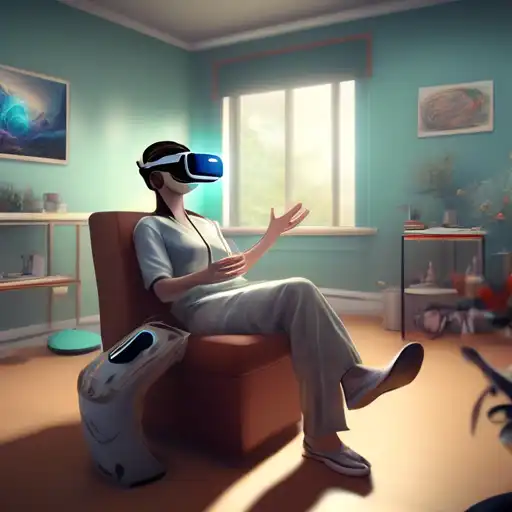The Transformative Role of Virtual Reality in Therapeutic Practices
Virtual Reality (VR) technology has transcended its initial entertainment-centric applications to become a groundbreaking tool in the field of therapy. By immersing patients in controlled, virtual environments, therapists are now able to treat a variety of psychological and physical conditions more effectively. This article explores the innovative ways VR is being utilized in therapeutic settings, offering new hope and possibilities for patients worldwide.
Understanding VR Therapy
VR therapy, also known as virtual reality exposure therapy (VRET), involves the use of VR technology to simulate environments or situations that are tailored to the therapeutic needs of the patient. This method has been particularly effective in treating phobias, PTSD, and anxiety disorders by allowing patients to confront their fears in a safe, controlled setting.
Applications of VR in Therapy
The applications of VR in therapy are vast and varied. Below are some of the most significant uses:
- Mental Health Treatment: VR is used to treat conditions such as PTSD, anxiety, and phobias by exposing patients to their triggers in a virtual environment, enabling them to learn coping mechanisms.
- Physical Rehabilitation: Patients recovering from strokes or injuries use VR to regain motor skills through engaging and interactive exercises.
- Pain Management: VR has been shown to reduce pain perception in patients undergoing painful procedures or suffering from chronic pain by distracting them with immersive experiences.
- Social Skills Training: Individuals with autism or social anxiety can practice and improve their social interactions in a variety of simulated social settings.
Benefits of VR Therapy
VR therapy offers numerous benefits over traditional therapeutic methods, including:
- Safety: Patients can face their fears without real-world risks.
- Controllability: Therapists can adjust the virtual environment to suit the patient's progress and needs.
- Engagement: The immersive nature of VR makes therapy sessions more engaging and less intimidating for patients.
- Accessibility: VR therapy can be accessed from anywhere, making it a viable option for those unable to attend in-person sessions.
Challenges and Considerations
Despite its potential, VR therapy faces several challenges, including the high cost of equipment, the need for specialized training for therapists, and concerns about patient privacy and data security. However, as technology advances and becomes more affordable, these barriers are expected to diminish.
The Future of VR in Therapy
The future of VR in therapy looks promising, with ongoing research and development aimed at expanding its applications and improving its effectiveness. As VR technology becomes more sophisticated and accessible, it is poised to revolutionize the therapeutic landscape, offering innovative solutions to complex health challenges.
For those interested in exploring the intersection of technology and mental health further, consider reading about the latest advancements in mental health apps or how AI is transforming healthcare.
